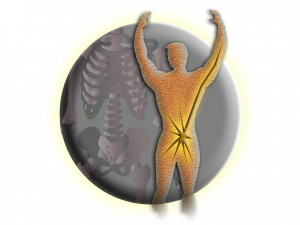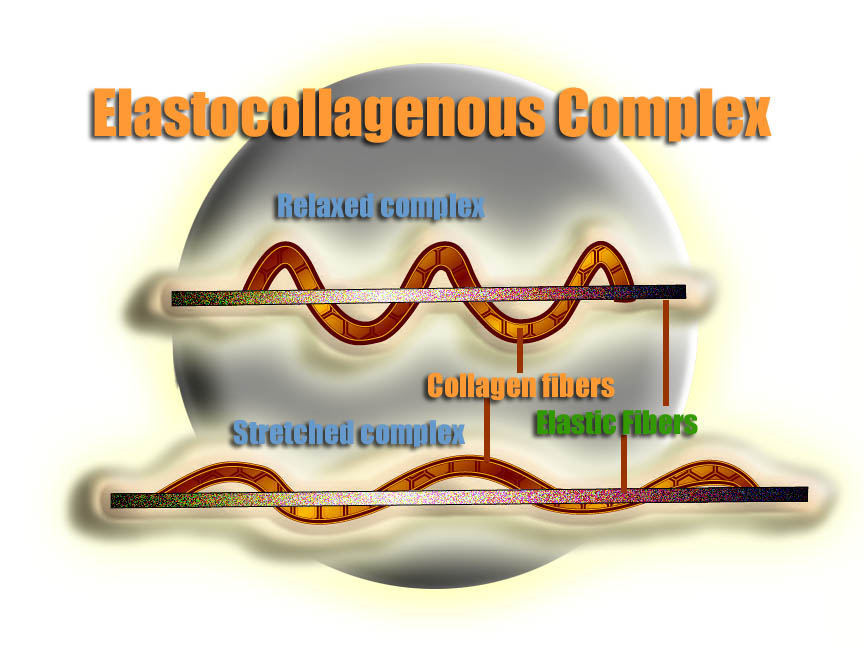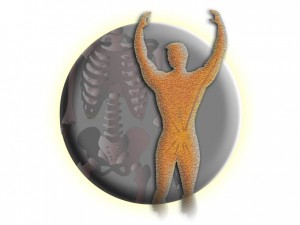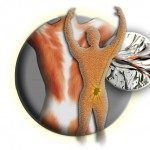Fascia, as a tissue, is composed of elastin, collagen and a polysaccharide complex called ground substance. A tough yet flexible connective tissue matrix that resembles a spider web is formed with these components, providing a contiguous connection from muscle to bone, bone to bone and organs to their supporting structures. Fascia is present even at the cellular level and is active in cellular nutrient transport and communication. Examining the components of fascia, we find that collagen is the component that provides strength and protection from over-stretching of the fascia. Elastin, then, provides the flexibility of fascia through its rubbery structure. The ground substance is composed of polysaccharides, namely hyaluronic acid and proteoglycans. This ground substance lubricates the other two components of fascia and provides shock-absorption for the entire body through its viscosity. The ground substance and therefore the entire fascial unit/body can exist in states that range from near-solid to near-fluid. Tissues of this type are called colloidal tissue. Discussion of the importance of this tissue will be addressed later in our exploration of the fascial system.
The Myofascial Component

When we refer to restrictions in the fascial system, we are referring specifically to areas that have lost their malleability due to processes that harden the fascial component and solidify the ground substance. Fascia has a tensile strength of up to 2000 lbs per square inch, so it is not difficult to imagine why therapists often hear complaints of severe pain in areas where restrictions are present. These restrictions can entrap pain-sensitive areas and decrease ROM locally. As the body adapts to this restriction, other restrictions may form due to compensatory postures or movements that are not biomechanically correct. This again may lead to pain in that region, reduced ROM and still more compensatory restrictions and dysfunction in yet another area and then throughout the entire body.


By employing these Myofascial Release techniques, we can improve and restore function, increase ROM and allow proper cellular function in restricted areas. The techniques discussed will have commonalities that aid in increasing fluidity in the ground substance which will lengthen the fascia and reduce or eliminate pressure on pain-sensitive areas. One such common concept will be the length of time that these techniques are held. For stretches aimed at lengthening the muscular unit, stretches typically last from 2 seconds to a minute. During a Myofascial Release technique, the minimum length of time the release should be held is between 1-3 minutes and may last as long as 5-10 minutes for a complete softening of the restriction. Whenever a force (i.e. pushing, pulling, twisting) is applied to the fascia, the ground substance will begin to change its viscosity due to the piezoelectric make-up of its matrix. The gentle traction forces will elicit heat, a vasomotor response that increases blood flow to the affected area, enhance lymphatic drainage of metabolic waste, realign fascial planes and reset the soft tissue proprioceptive sensory mechanism which reprograms the Central Nervous System, enabling a normal, functional ROM without eliciting old pain patterns.
As layer after layer of these restrictions are released, fascia and the surrounding tissue, organs, bones, blood vessels and nerves can return to a more functional state and the client will report a decrease in pain, an increase in ROM and a decrease in dysfunction. Time after time it occurs that, once the fascial system is addressed, clients begin to make progress and in a matter of weeks, with Myofascial Release treatment, they are on their way to a pain-free, active lifestyle again.

2*See Footnote 1.
3*http//myofascialrelease.com
4*Barnes JF, Smith G. The body is a self-correcting mechanism. Physical Therapy Forum, July 8, 1987
